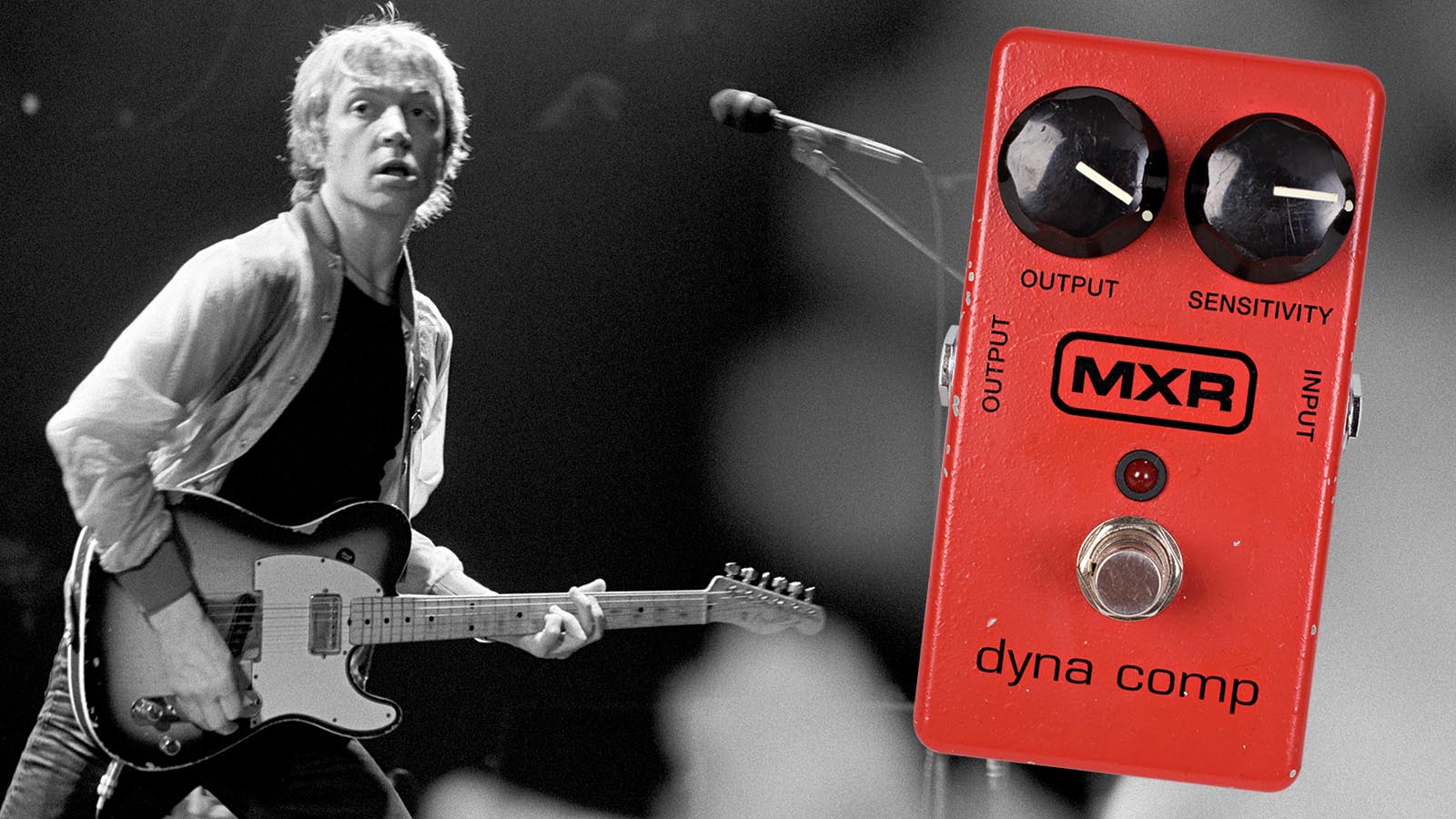How the MXR Dyna Comp became the go-to compressor pedal for countless all-star guitarists
Much loved by Andy Summers, Yngwie Malmsteen and legions of country players, the Dyna Comp is the little red box that became an evergreen choice for those looking for pro-quality compression

The MXR Dyna Comp wasn’t the first compressor pedal on the market – the Maestro SS-1 Sustainer and Electro-Harmonix Black Finger preceded it by a few years – but it was certainly the first to be embraced by a wide variety of professional players who helped it become a standard, essential item in many guitarists’ rigs for nearly five decades.
Designed to provide live performers with a low-cost alternative to the expensive and bulky rack-mount compressors used in the studio, the Dyna Comp can provide a smooth, professional polish to one’s sound, but it also can deliver special effects with their own distinctive “squashed” sonic fingerprint.
The Dyna Comp’s relatively simple circuit employs Operational Transconductance Amplifier (OTA) compression, which provides a fast attack and relatively slow decay and release that works particularly well for many guitar playing styles.
Actually the pedal operates more like a limiter than a true compressor as it mediates volume differences between notes to provide more consistent note-to-note output primarily by reducing the gain of attack transients, although it also amplifies weak signals slightly to improve sustain.
As a result, the percussive “pop” of the pick (or finger) striking the string is reduced to the same general volume level as the initial note. The Dyna Comp’s circuit also rolls off some of the high harmonics and bass, delivering a perceived midrange boost.
During the ’70s, country guitarists embraced the Dyna Comp because its fast attack accentuates the pluck and cluck of chicken pickin’ licks, and its long release adds body to sustained notes in pedal steel bends.
The box also nicely evens out the levels of strings played with a pick and fingers as well as open strings and harmonics. Funk rhythm players appreciated the consistency maintained between pick attack “chuks”, chords and single-note lines as well as the even balance of each note in chords.
All the latest guitar news, interviews, lessons, reviews, deals and more, direct to your inbox!
The Dyna Comp also works very well with slide playing (Lowell George, Sonny Landreth and Bonnie Raitt all have used Dyna Comps), 12-string guitar and sweep picking techniques – Yngwie Malmsteen’s pedalboard has had a Dyna Comp pretty much since day one
The Dyna Comp is also famous for its use by David Gilmour on numerous Pink Floyd tracks recorded during the late ’70s, as the pedal was a key element of his Strat’s sweet, singing sustain when used in conjunction with a Big Muff or other distortion/overdrive pedal.
The effect’s distinctive “squish” gave character to Andy Summers’ percussive chords, heard to great effect on the Police’s Walking on the Moon. David Byrne often used a Dyna Comp at extremely compressed settings for his rhythmic and melodic lines with Talking Heads, with the effect being particularly notable during the outro of Drugs. Since the late ’70s, Pete Townshend has often used a Dyna Comp on stage with the Output control maxed as a clean boost for his solos.
Suggested settings
Country chicken pickin’ – Output: 8, Sensitivity: 3
Tip: This is the classic “snake eyes” setting where the control knob lines are pointing straight at each other. Use a Telecaster at the bridge pickup setting.
Andy Summers rhythm – Output: 6, Sensitivity: 6
Tip: The harder you strike a chord, the more “squishy” it becomes. Single-coil pickups (Tele or Strat) are also the way to go here.
Chris is the co-author of Eruption - Conversations with Eddie Van Halen. He is a 40-year music industry veteran who started at Boardwalk Entertainment (Joan Jett, Night Ranger) and Roland US before becoming a guitar journalist in 1991. He has interviewed more than 600 artists, written more than 1,400 product reviews and contributed to Jeff Beck’s Beck 01: Hot Rods and Rock & Roll and Eric Clapton’s Six String Stories.




